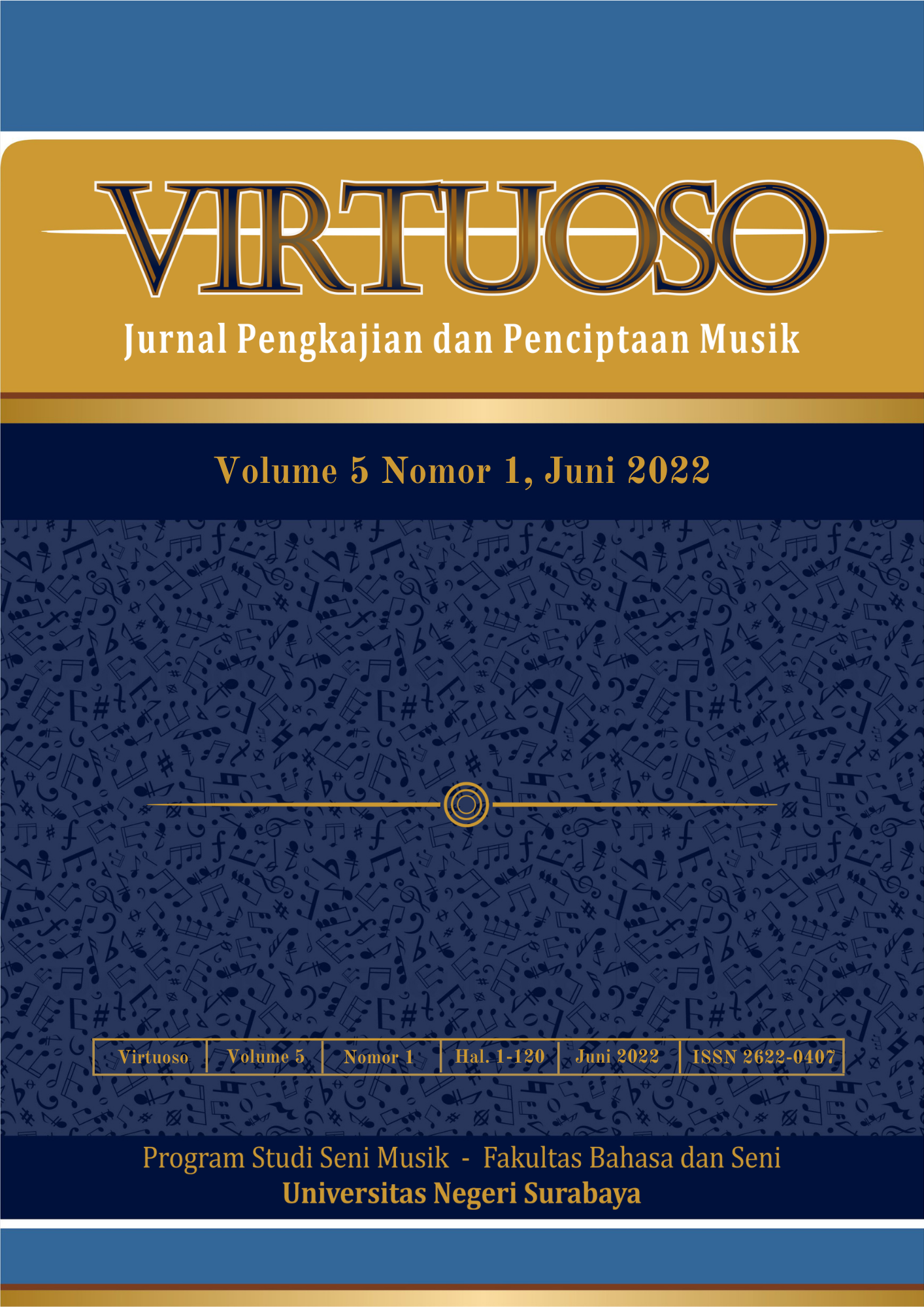The Effect of Learning Gamelan Art on Emotional Intelligence
Main Article Content
Abstract
Teenager are increasingly confronted with emotional issues, demanding a solution such as adolescent emotional intelligence development. Traditional Indonesian music, notably Javanese gamelan, can help teenager develop emotional intelligence. People who follow a set of rules and limits undertake Javanese gamelan exercises. When practicing gamelan, the individual must hit his gamelan tool and listen to the gamelan played by his colleagues in the gamelan group to generate a harmonic gamelan sound. This study used quantitative approaches in conjunction with a sample size of 135 UWK Surabaya students. The Java Gamelan Music Exercise Intensity Scale (r = 0.848) and the Emotional Intelligence Scale (r = 0.772) are used as data-gathering instruments in the sampling technique. The product-moment correlation method was used to analyze the data, and the result was 0.550. The study's findings revealed a link between the severity of Javanese gamelan music training and emotional intelligence, with the higher the intensity of Javanese gamelan music training, the higher the emotional intelligence. The intensity variable of Javanese gamelan music training can contribute 30.25 percent to the emotional intelligence variable. In contrast, the remaining 69.75 percent is influenced by elements other than the intensity variable of Javanese gamelan music training. Beyond the intensity variables of Javanese gamelan music training, the family, non-family, physical, and psychological environments all have a role.
Downloads
Article Details

This work is licensed under a Creative Commons Attribution-NonCommercial-ShareAlike 4.0 International License.
The copyright of the received article once accepted for publication shall be assigned to the journal as the publisher of the journal. The intended copyright includes the right to publish the article in various forms (including reprints). The journal maintains the publishing rights to the published articles.
References
Akdon, R. &. (2010). Rumus dan data dalam analisis statistika. Alfabeta.
Aribawa, K. (2018). Pengembangan Aplikasi Game Musik Tradisional Bali Megamelan Berbasis Multiplatform. Jurnal Teknologi Informasi Dan Ilmu Komputer, 5(1), 7. https://doi.org/10.25126/jtiik.201851493
Arikunto. (2006). Prosedur penelitian suatu pendekatan praktek. Rineka Cipta.
Azwar, S. (2010). Penyusunan skala psikologi. Pustaka Pelajar.
Djohan. (2010). Respons emosi musikal. Lubuk Agung.
Elliott, D. J. (2010). Praxial Music Education. In Praxial Music Education. https://doi.org/10.1093/acprof:oso/9780195385076.001.0001
Hallan, S. (2006). Music Psichology in Education. Bedford Way Papers.
Harris, M. (2009). Music AND THE Young Mind Enhancing Brain Development and Engaging Learning.
Hartono. (2012). Perkembangan Estetika Musikal Seni Karawitan Jawa Dan Pengaruhnya Terhadap Masyarakat Pendukungnya. Media Seni Dan Desain, 1(1), 25.
Priyatno, D. (2008). Mandiri belajar SPSS. Mediakom.
Rohidi, R. (2011). Metodologi Penelitian Seni. Cipta Prima Nusantara.
Shaleha, R. R. A. (2019). Do Re Mi: Psikologi, Musik, dan Budaya. Buletin Psikologi, 27(1), 43. https://doi.org/10.22146/buletinpsikologi.37152
Untari, D. T. (2018). Buku Ajar Metodologi Penelitian. Pena Persada, Banyumas, Jawa Tengah, Indonesia, 186. www.penapersada.com

